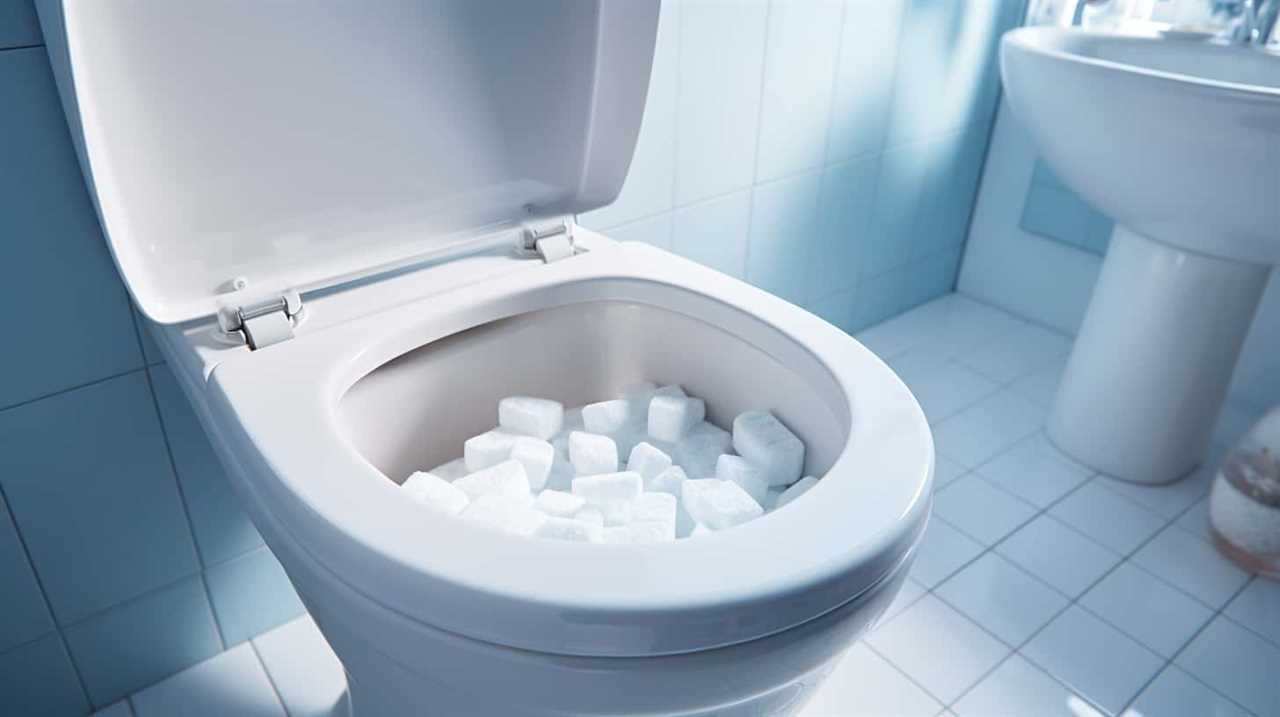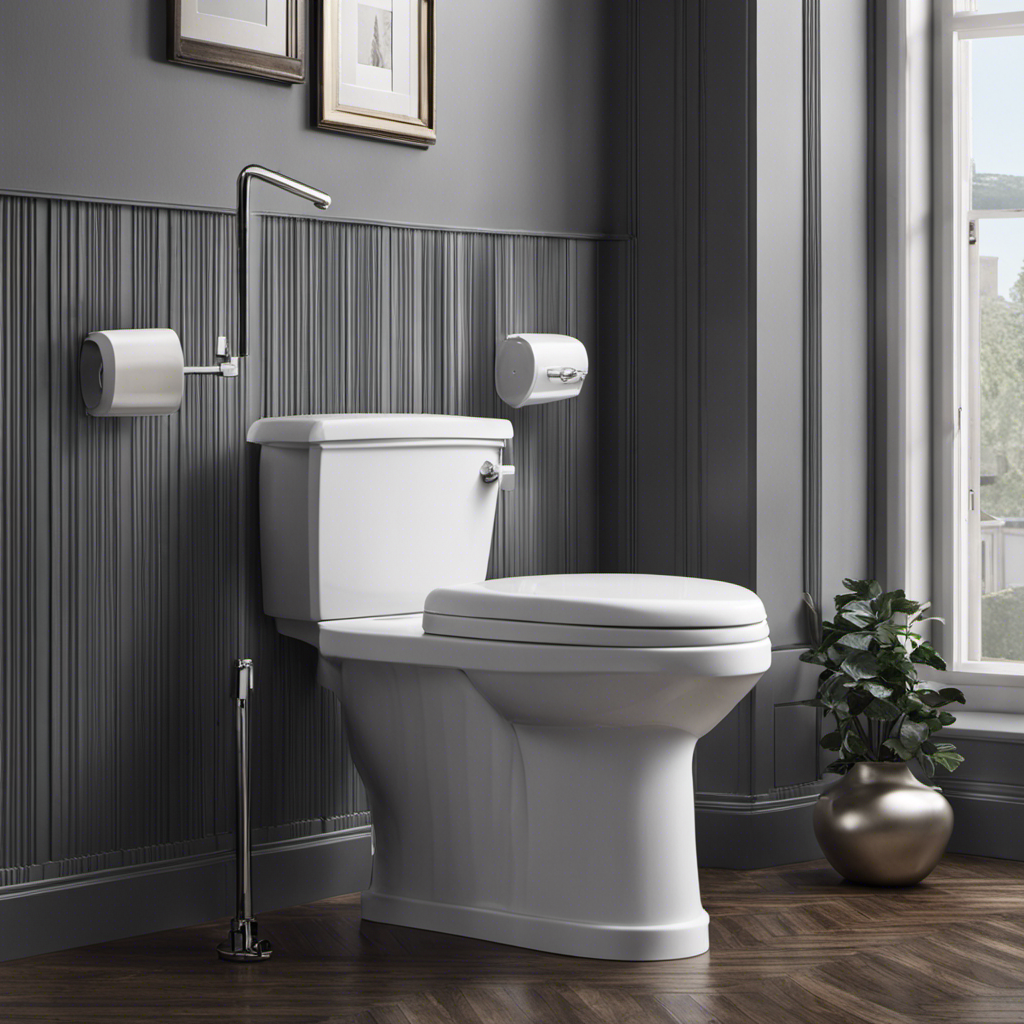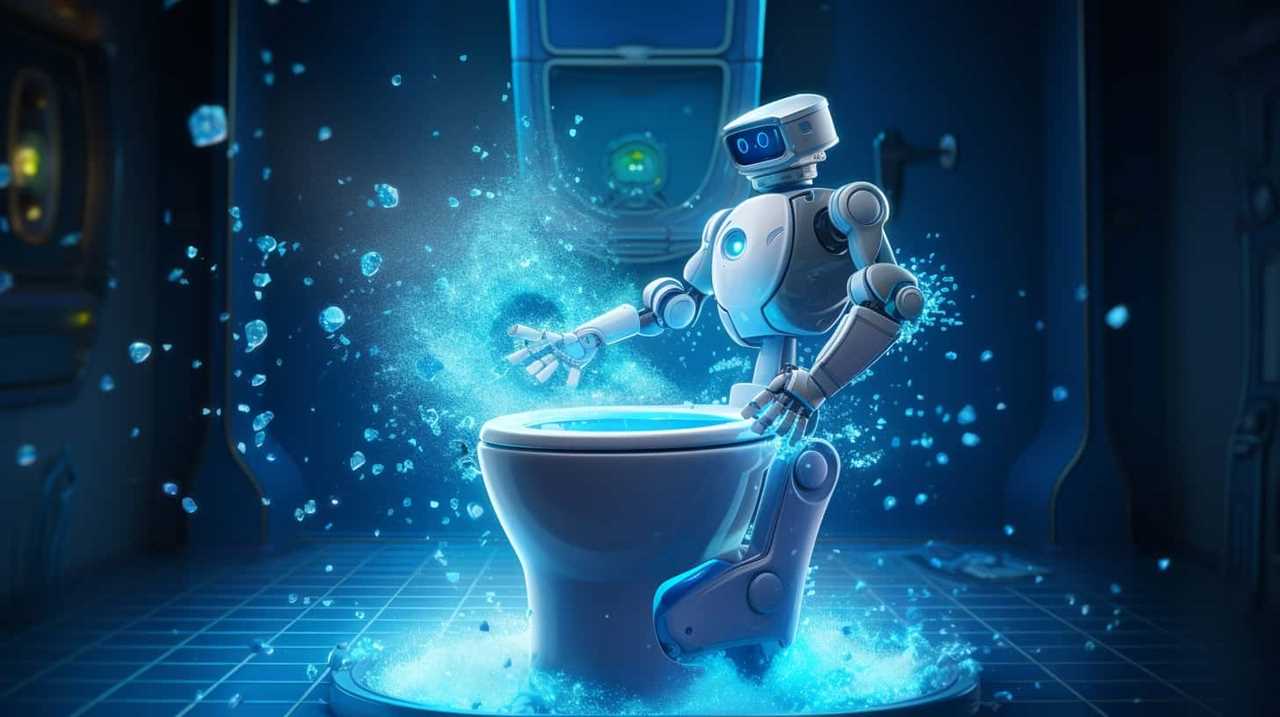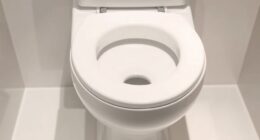Oh, how we take our toilets for granted! But what happens when we neglect them for a long time?
Neglecting our porcelain thrones can lead to a host of unpleasant consequences. From foul odors and rampant bacterial growth to potential blockages and damage to the toilet’s inner workings, the repercussions can be quite messy.
In this article, we will delve into the technicalities of what occurs when a toilet is left unused for an extended period, providing you with the information you need to prevent any unwelcome surprises.
Key Takeaways
- Stagnant water in the toilet bowl can breed bacteria and cause odor build-up.
- Lack of use can lead to the drying out of traps, allowing sewer gases to enter the bathroom.
- Accumulation of debris in the pipes can cause blockages and clogs.
- Prolonged non-usage can result in seal deterioration, leaks, and water damage.
Odor Build-Up and Bacterial Growth
If we don’t use the toilet for an extended period, odor and bacteria can accumulate. Proper toilet maintenance is crucial to prevent plumbing issues and ensure a clean and hygienic bathroom environment.
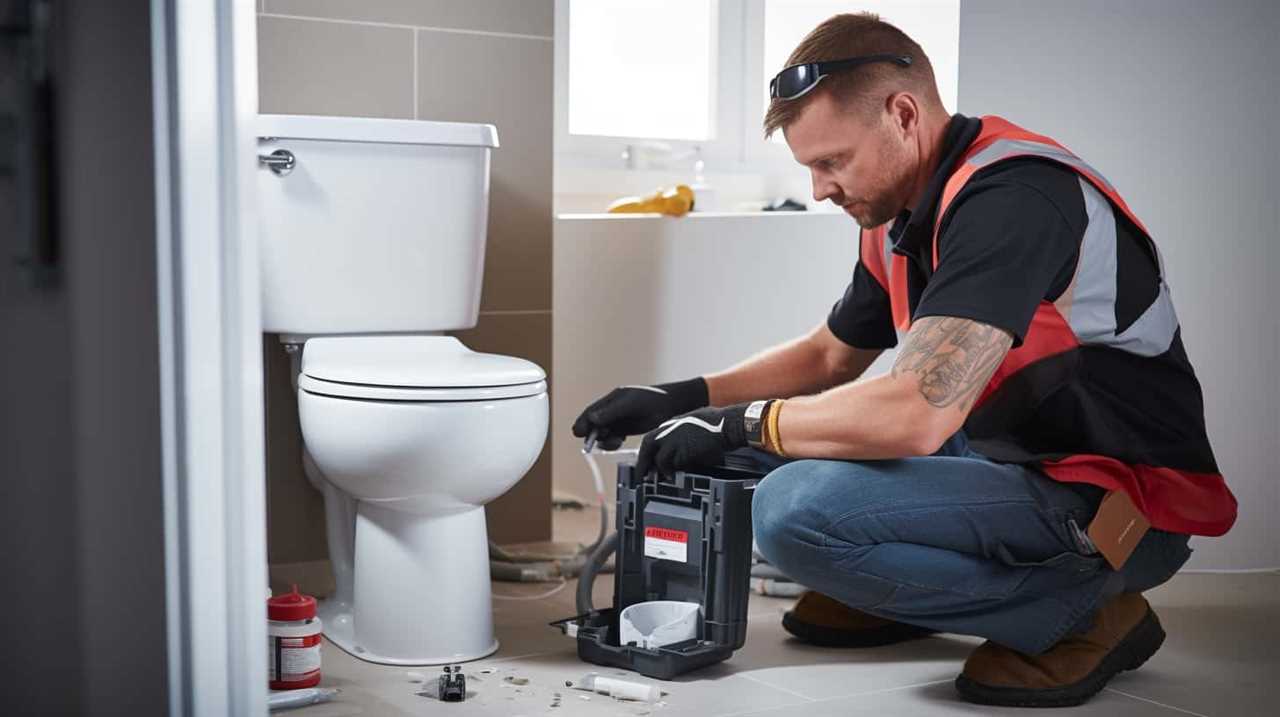
When a toilet is left unused for a long time, stagnant water in the bowl can become a breeding ground for bacteria. This can lead to unpleasant odors and potential health risks. Additionally, the lack of use can cause the water in the toilet trap to evaporate, allowing sewer gases to enter the bathroom.
To avoid these problems, it’s recommended to regularly flush the toilet and clean it with disinfectants. Checking for any leaks or blockages in the plumbing system is also essential.
Potential Blockages and Clogs
To continue the discussion on the potential consequences of not using a toilet for an extended period, let’s explore the issue of potential blockages and clogs. Neglecting toilet maintenance can lead to various plumbing issues, and blockages and clogs are among the most common problems that can arise.
Here are three key reasons why this can occur:
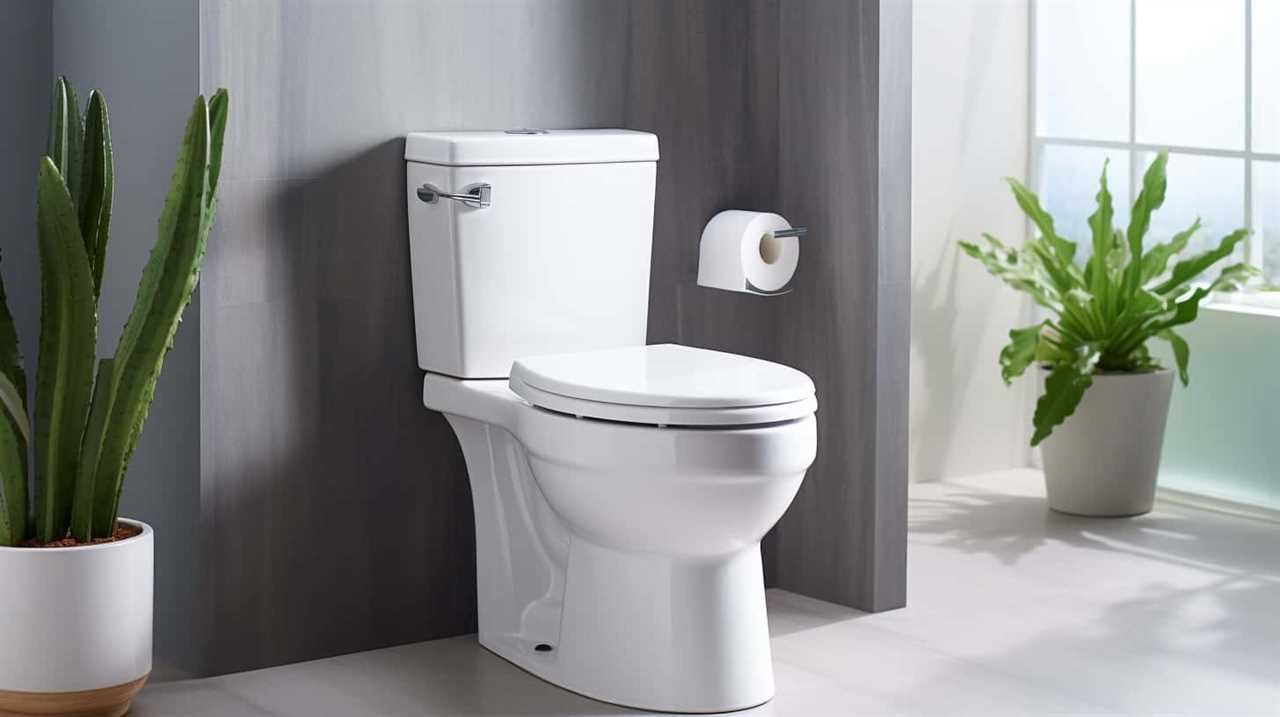
- Accumulation of debris: When a toilet isn’t used regularly, debris such as toilet paper, hair, and other waste can accumulate in the pipes. Over time, this buildup can cause blockages, preventing water from flowing freely and leading to clogs.
- Dried-out seals: Lack of use can cause the seals in the toilet to dry out, becoming brittle and prone to cracking. This can result in leaks or blockages as the seals fail to effectively prevent water from leaking or flowing properly.
- Inefficient flushing: If a toilet isn’t used for a prolonged period, the water in the trap can evaporate, resulting in a dry trap. This can lead to poor flushing performance, as the trap is designed to provide a water seal to prevent sewer gases from entering the bathroom.
Damage to Toilet Mechanisms and Seals
Moving on to the topic of potential damage to toilet mechanisms and seals, we should consider the effects of prolonged non-usage on the functionality and integrity of the toilet.
When a toilet isn’t used for an extended period, several issues may arise that require toilet maintenance and plumbing repairs.
The first concern is the deterioration of the toilet’s seals. Seals, such as the wax ring at the base of the toilet, can dry out and become brittle over time, leading to leaks and water damage.
Additionally, the rubber gaskets and O-rings that ensure a watertight connection between different components of the toilet may degrade, resulting in leaks and inefficiencies.
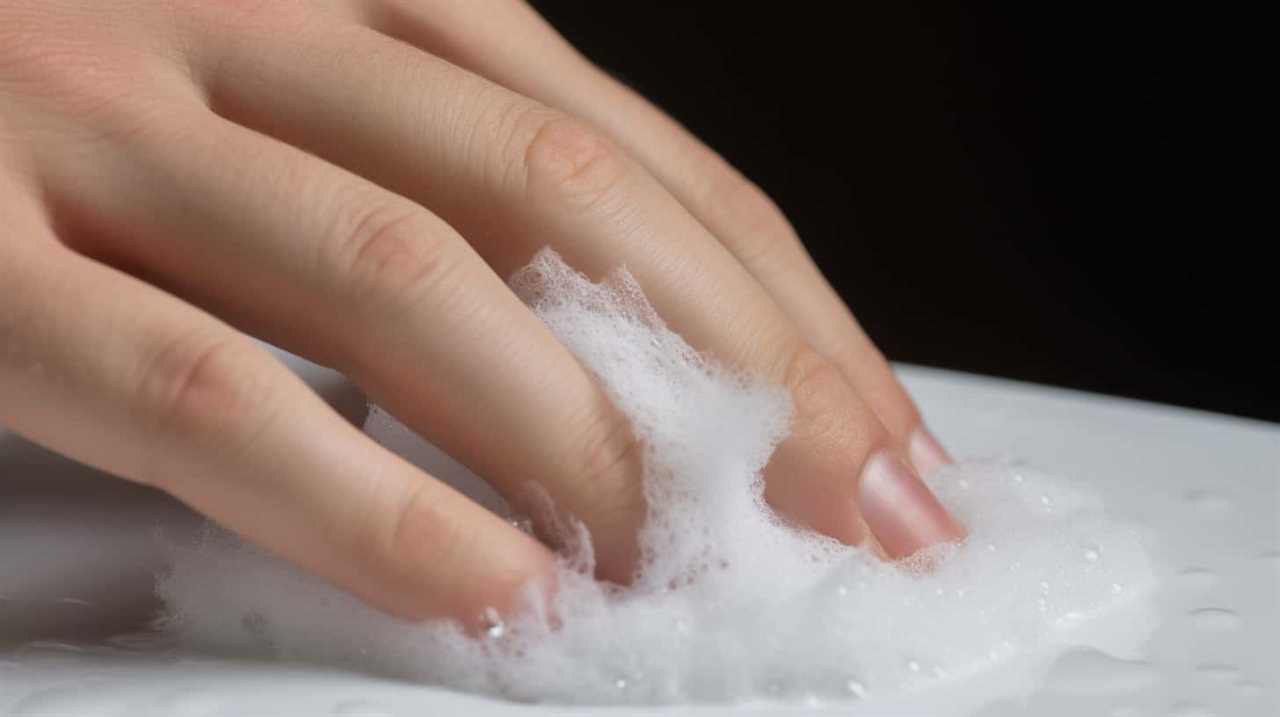
Furthermore, the flushing mechanisms, including the fill valve and flush valve, may become stuck or corroded due to lack of use, requiring repairs or replacements.
Proper toilet maintenance, including regular flushing and checking for leaks, is crucial to prevent these issues and ensure the longevity of the toilet’s mechanisms and seals.
Increased Risk of Leaks and Water Damage
When a toilet is left unused for an extended period, there’s an increased risk of leaks and water damage due to the deterioration of seals and the potential for mechanical failures. This is an important consideration for water conservation and plumbing maintenance.
Here are three reasons why the risk of leaks and water damage is heightened when a toilet isn’t used regularly:
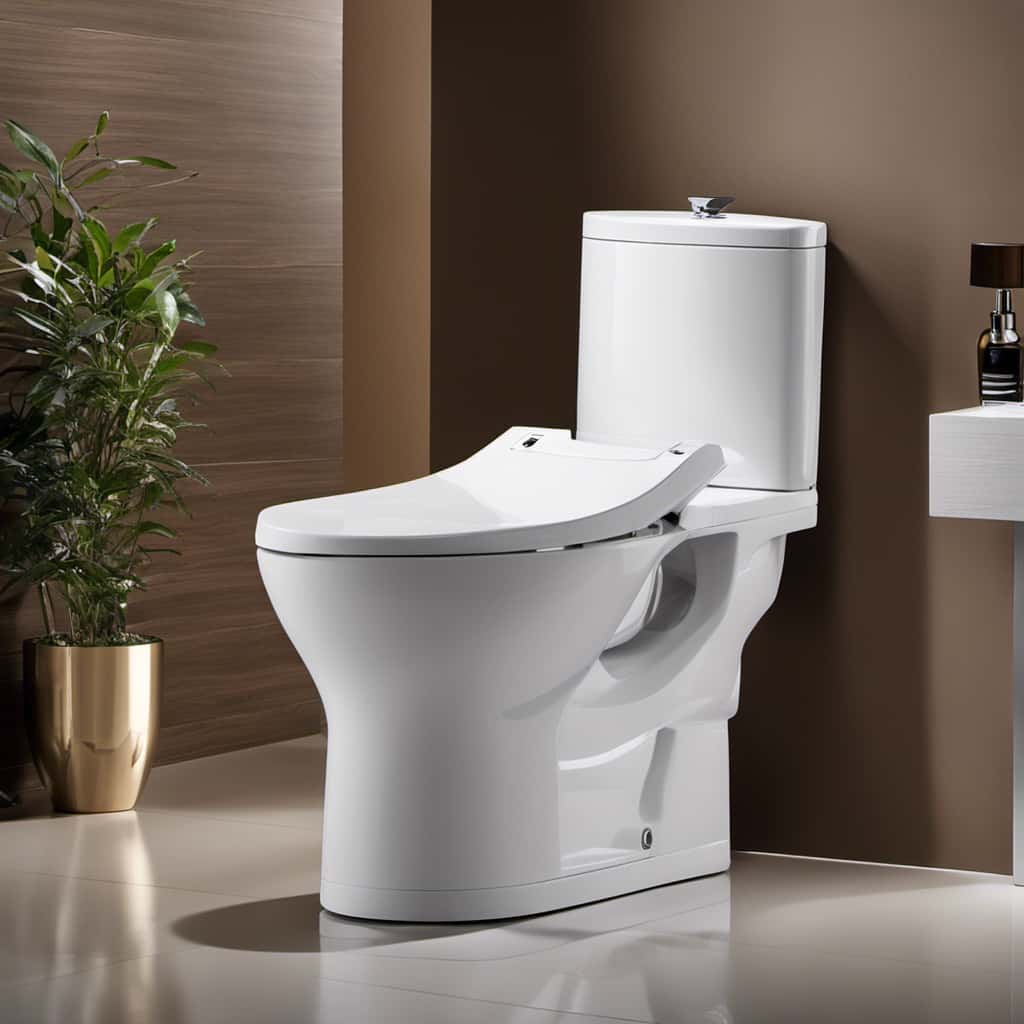
- Deterioration of Seals: The seals in a toilet can dry out and become brittle when not regularly exposed to water. This can lead to leaks around the base of the toilet or in the tank, causing water damage to the surrounding area.
- Mechanical Failures: Components within the toilet, such as the fill valve and flush valve, may experience issues when left unused for a long time. These failures can result in leaks and water damage if not addressed promptly.
- Increased Pressure: When a toilet isn’t flushed regularly, the water inside the tank can stagnate and create pressure on the seals and components. This added pressure can cause them to fail, leading to leaks and potential water damage.
To prevent these issues, it’s important to perform regular maintenance on your toilet, even if it isn’t being used frequently. This includes checking and replacing seals as needed, inspecting and lubricating mechanical components, and flushing the toilet periodically to prevent stagnation. By following these practices, you can mitigate the risk of leaks and water damage, while also promoting water conservation and maintaining the health of your plumbing system.
Tips to Prevent Problems When Not Using the Toilet Regularly
To avoid potential issues when the toilet isn’t used regularly, we can implement a few simple tips to prevent problems.
Firstly, it’s important to conserve water by regularly flushing the toilet. This can be done by simply pouring a bucket of water into the toilet bowl.
Additionally, it’s advisable to check for any leaks or drips in the toilet system. This can be done by inspecting the toilet tank and pipes for any signs of water leakage. If leaks are found, it’s crucial to fix them promptly to prevent further damage.
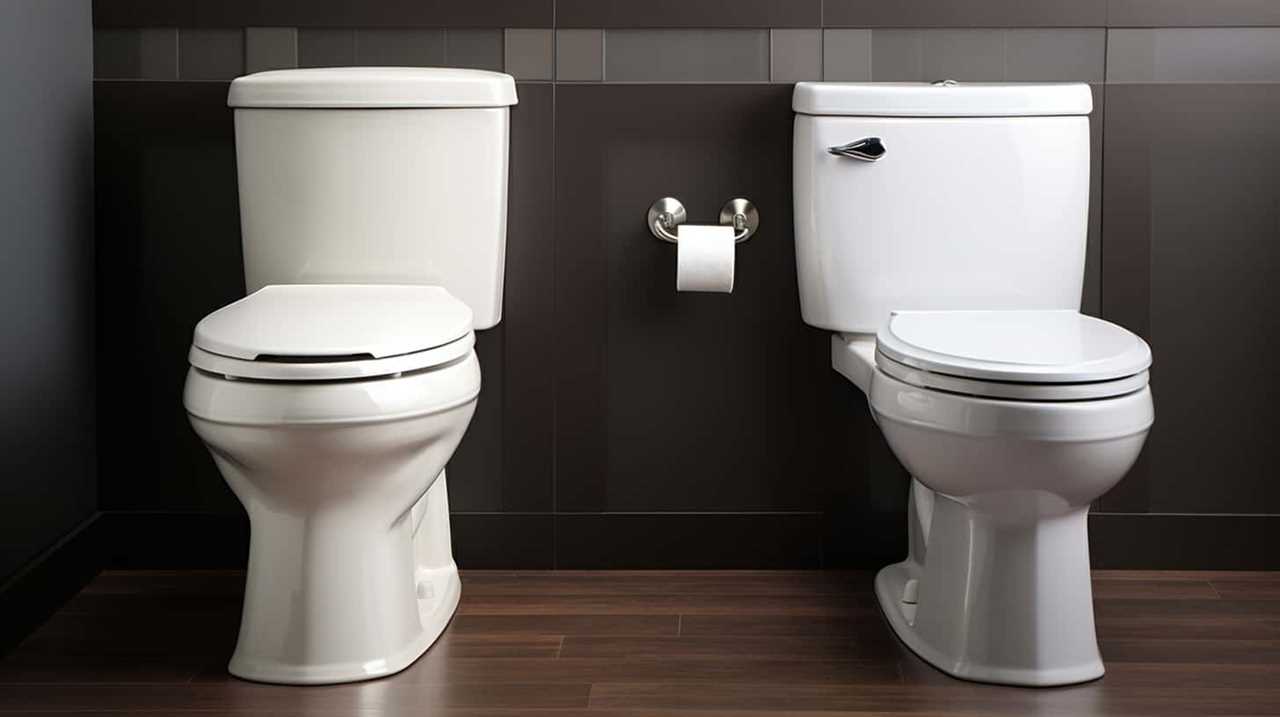
Furthermore, alternative bathroom solutions can be considered, such as using composting toilets or installing waterless urinals. These options can help reduce water consumption and minimize the risk of problems when the toilet isn’t used regularly.
Frequently Asked Questions
Can Not Using the Toilet for a Long Time Lead to Health Issues?
Not using the toilet for a long time can have negative consequences on our health. It increases the risks of urinary tract infections and has a detrimental impact on overall bathroom hygiene.
How Long Does It Take for Odor Build-Up and Bacterial Growth to Occur in an Unused Toilet?
When an unused toilet sits for a while, water evaporation occurs, leading to odor build-up and bacterial growth. To prevent mold and mildew, regularly flush and clean the toilet, maintaining a healthy environment.
What Are Some Signs of Potential Blockages and Clogs in an Unused Toilet?
When toilets are not used for a long time, potential blockages and clogs can occur. Signs include slow draining, gurgling sounds, and overflow. Regular maintenance, such as flushing with water and periodic cleaning, can prevent damage.
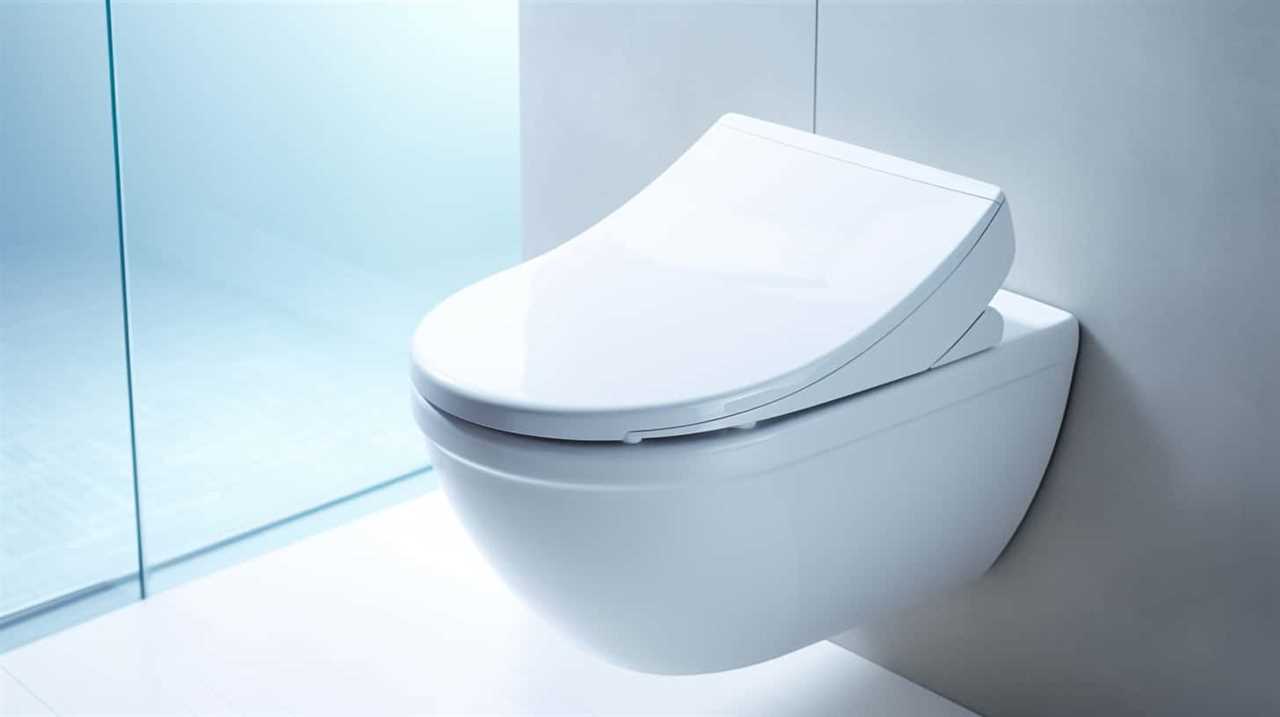
Can Not Using the Toilet for a Long Time Cause Damage to the Plumbing System?
Not using the toilet for a long time can potentially cause damage to the plumbing system. Regular usage and proper plumbing maintenance are crucial to prevent issues like blockages and clogs.
Are There Any Specific Precautions to Take When Leaving a Toilet Unused for an Extended Period of Time?
When leaving a toilet unused for an extended period, it’s important to take certain precautions to ensure proper maintenance. These include shutting off the water supply, flushing the toilet to remove any remaining water, and periodically checking for leaks or other issues.
Conclusion
In summary, neglecting to use a toilet for an extended period can lead to significant consequences.
Odor build-up and bacterial growth can create an unpleasant and unhygienic environment. Blockages and clogs may occur, causing potential damage to the toilet mechanisms and seals.
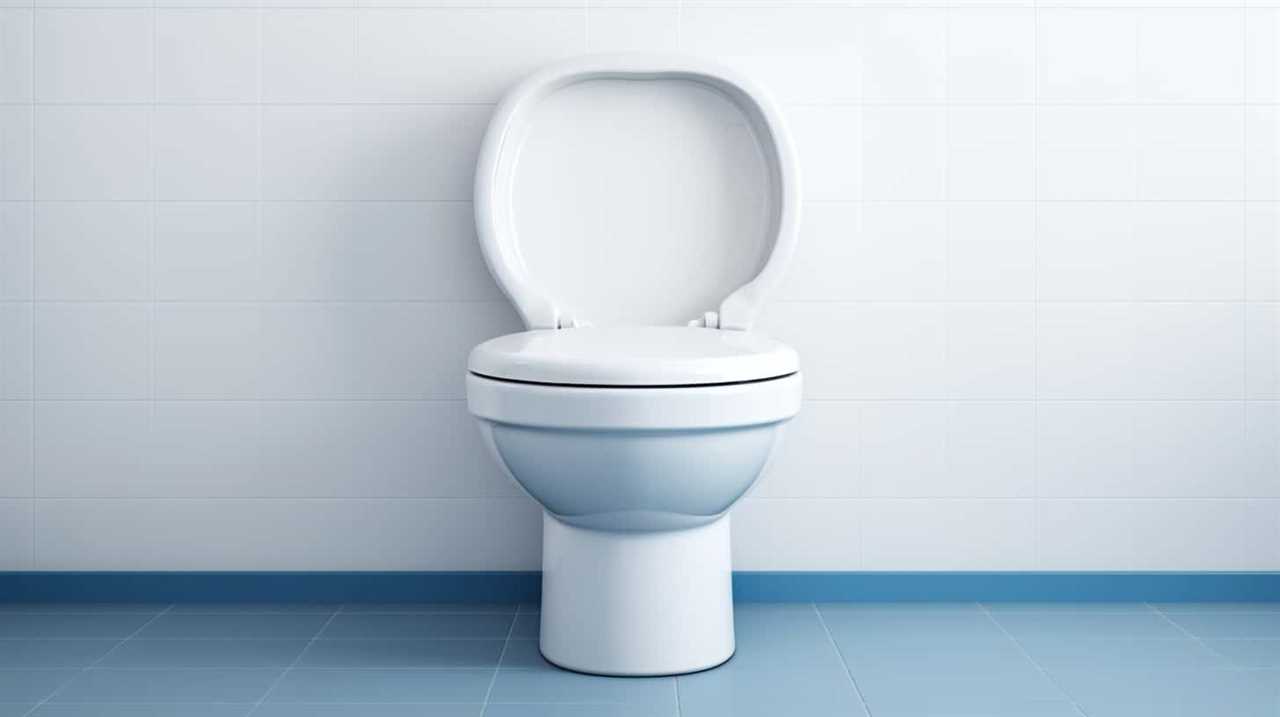
Additionally, the risk of leaks and water damage increases over time.
To prevent these problems, it’s crucial to follow proper maintenance and care routines when the toilet isn’t regularly used. Stay vigilant to avoid costly and inconvenient repairs.

